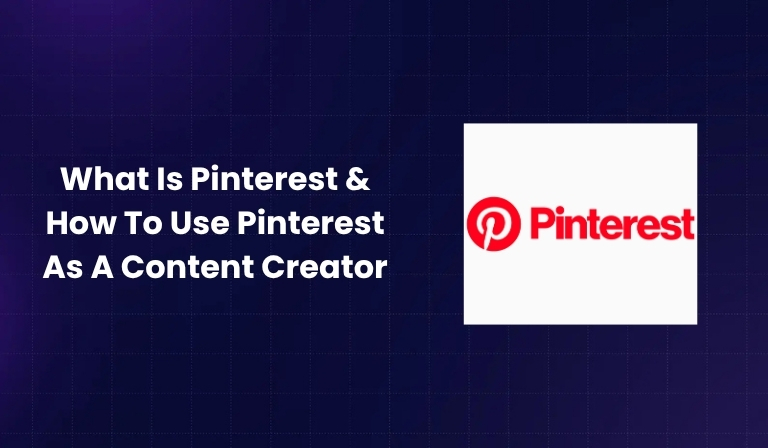Pinterest is more than just a place to find recipes or home decor ideas — it’s a powerful visual search engine and content-sharing platform. For content creators, it’s a goldmine of traffic, visibility, and engagement. Whether you’re a blogger, YouTuber, or artist, Pinterest can help grow your audience and income.
In this guide, we’ll explain what Pinterest is, how it works, and how you can use it effectively as a content creator.
What Is Pinterest?
Pinterest is a visual discovery platform where users can find inspiration, save ideas, and plan future projects. Think of it as a digital pinboard. Users “pin” images, videos, and links to themed “boards.”
Launched in 2010, Pinterest has grown to millions of users worldwide, with content ranging from DIY crafts to business tips and travel guides.
How Does Pinterest Work?
Pinterest works by allowing users to:
- Search visually: Users type keywords to discover related pins.
- Save pins: These pins can be saved to their boards for future reference.
- Create pins: Users and creators can upload their own pins with images, links, and descriptions.
Unlike other platforms, Pinterest content has a long shelf life. A pin can bring traffic to your content for months or even years.
Why Is Pinterest So Popular?
Pinterest is popular because:
- It’s visually driven, making it easy and fun to browse.
- It helps users plan — from weddings to workouts.
- Pins last a long time, unlike short-lived posts on Instagram or Twitter.
People use it to gather ideas, find solutions, and make purchase decisions — all visually.
Why Do People Use Pinterest Instead of Google?
While Google is great for facts and quick answers, Pinterest is better for inspiration. Here’s why:
- Visual search: Users see images first, not just links.
- Better for ideas: Great for planning events, designing spaces, or creating projects.
- User-generated: It’s full of real-world examples shared by creators and users.
Pinterest is like a visual version of Google for ideas and lifestyle content.
Is Pinterest Free To Use?
Yes, Pinterest is free for both personal and business users. You can:
- Sign up for a free account
- Create boards and pins
- Access insights (with a business account)
Even businesses and creators can use it at no cost, though Pinterest also offers paid advertising options.
Are Images on Pinterest Copyright-Free?
No, not all images on Pinterest are copyright-free. You should:
- Only pin your own content or content with permission
- Credit sources when needed
- Use stock images or original designs when creating pins
Avoid downloading and reposting others’ images without checking for usage rights.
Does Pinterest Use Hashtags?
Yes, Pinterest supports hashtags, but they’re not as important as keywords. When using hashtags:
- Stick to relevant hashtags
- Use a few (1–5) per pin
- Combine with keywords in the pin description
Hashtags can help with search visibility but Pinterest primarily relies on keyword search.
Who Is Pinterest’s Target Audience?
Pinterest’s core audience includes:
- Women (especially aged 25–44)
- Mothers, planners, shoppers, DIYers, and professionals
- Content creators, bloggers, small business owners
Understanding your audience helps tailor your content to what they’re already searching for.
Can You Make Money on Pinterest?
Absolutely! Pinterest is a strong platform for passive income. Creators can make money through:
- Sponsored content
- Affiliate links
- Selling products or services
- Driving traffic to monetized blogs or YouTube channels
You don’t need millions of followers — quality content can go viral and earn over time.
How To Make Money on Pinterest as a Content Creator
1. Brand Partnerships
Partner with brands to create sponsored pins. Share their product or service in a creative and natural way. Tips:
- Build a solid Pinterest presence first
- Show analytics and engagement
- Reach out or join influencer platforms
2. Use Shoppable Pins & Affiliate Links
Shoppable Pins let you link directly to products. You can also:
- Sign up for affiliate programs (like Amazon or RewardStyle)
- Create pins featuring products
- Earn a commission when users click and buy
Always disclose affiliate links properly!
Also Check: Content Monetization Explained: Platforms, Models, & Strategies
How To Use Pinterest as a Content Creator
1. Optimize Your Profile
- Add a professional photo and clear bio
- Use keywords in your profile
- Claim your website and enable Rich Pins
2. Create High-Quality Pins
- Use vertical images (1000x1500px recommended)
- Add bold titles and text overlay
- Keep visuals simple and eye-catching
3. Use Keywords and Descriptions
- Research Pinterest keywords
- Add them naturally in titles and descriptions
- Focus on solving a problem or answering a question
4. Leverage Boards Effectively
- Organize boards by topics
- Use relevant names with keywords
- Pin both your own and others’ content
5. Post Consistently and Strategically
- Aim to pin daily or several times a week
- Schedule pins during peak hours
- Use scheduling tools like Buffer or Tailwind
6. Repurpose and Schedule Content
- Turn blog posts or videos into multiple pins
- Create different designs for the same link
- Schedule pins ahead of time for consistency
How To Use Pinterest as a Business
1. Pinterest Advertising
Pinterest Ads (Promoted Pins) let you:
- Boost visibility
- Target specific audiences
- Drive traffic to your website or product
Start with a small budget and test different designs and keywords.
2. Enable Shopping on Pinterest
If you have a product-based business:
- Set up a product catalog
- Tag items in your pins
- Allow users to shop directly from Pinterest
Perfect for eCommerce stores!
How To Track Performance Using Pinterest Analytics
Pinterest Analytics helps you:
- See which pins get the most clicks, saves, or views
- Understand your audience demographics
- Improve content based on performance data
Use these insights to refine your strategy over time.
Common Mistakes to Avoid on Pinterest
1. Don’t Just Focus on Your Brand
Mix promotional pins with helpful, engaging content.
2. Avoid Posting During Busy Hours
Post when your audience is most active — usually evenings and weekends.
3. Don’t Oversell
Provide value before asking for a sale.
4. Balance Text with Visuals
Don’t overcrowd pins — keep them clean and readable.
5. Follow and Engage with Other Creators
Engaging builds community and increases visibility.
6. Name Your Boards Properly
Use clear, keyword-rich titles — avoid clever names that no one searches for.
7. Use Correct Image Dimensions
Vertical pins perform better. Aim for a 2:3 aspect ratio.
Conclusion
Pinterest is a powerful tool for creators who want to grow their audience, earn money, and build long-lasting visibility. Unlike social media posts that disappear quickly, Pinterest content can continue working for you over time.
Start small: create great pins, focus on keywords, and stay consistent. Whether you’re sharing blog posts, videos, products, or ideas — Pinterest can become a key part of your content strategy.

